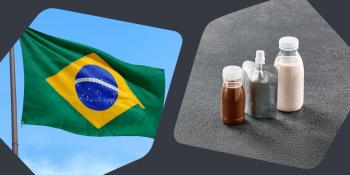
Nutrameltz melt-in-your-mouth supplement delivery technology makes its debut
The delivery technology is said to accommodate a higher active-ingredient load and feature longer stability than traditional gummy-style supplements.
Supplement delivery systems developer Nutrameltz (Mississauga, ON, Canada) is introducing its new supplement delivery technology to the market: a melt-in-your-mouth supplement. The delivery technology is said to accommodate a higher active-ingredient load and feature longer stability than traditional gummy-style supplements.
Nutrameltz technology was developed by company CEO and Founder Suresh Kolla and is designed to provide an alternative delivery format to consumers who don’t want to consume typical tablets and capsules, or who can’t swallow pills, or who find gummy supplements difficult to chew or who want to avoid gummies containing sugar.
According to Kolla, Nutrameltz offers formulators numerous benefits, including the fact that “we can effectively incorporate up to 250 mg of actives in one melt, which is more than can be delivered via a typical gummy.” Kolla says that Nutrameltz also has a three-year stability and shelf life compared to the typical two years offered by gummies. Unlike gummies, which can clump together, each Nutrameltz is housed in its own individual blister package.
Says the company’s press release: “Nutrameltz’s advantages are highly attractive for both brands and their consumers. They are solid dosage forms that are disintegrated, dissolved, or ‘melted’ by saliva in the mouth, without the need of water. This avoids the first-pass metabolism in the gut and liver, which in turn provides improved bioavailability. Additionally, it will not be affected by gastric fluids, making the choice of route for reducing gastric irritation—that is, no vitamin burps!”
Newsletter
From ingredient science to consumer trends, get the intel you need to stay competitive in the nutrition space—subscribe now to Nutritional Outlook.





